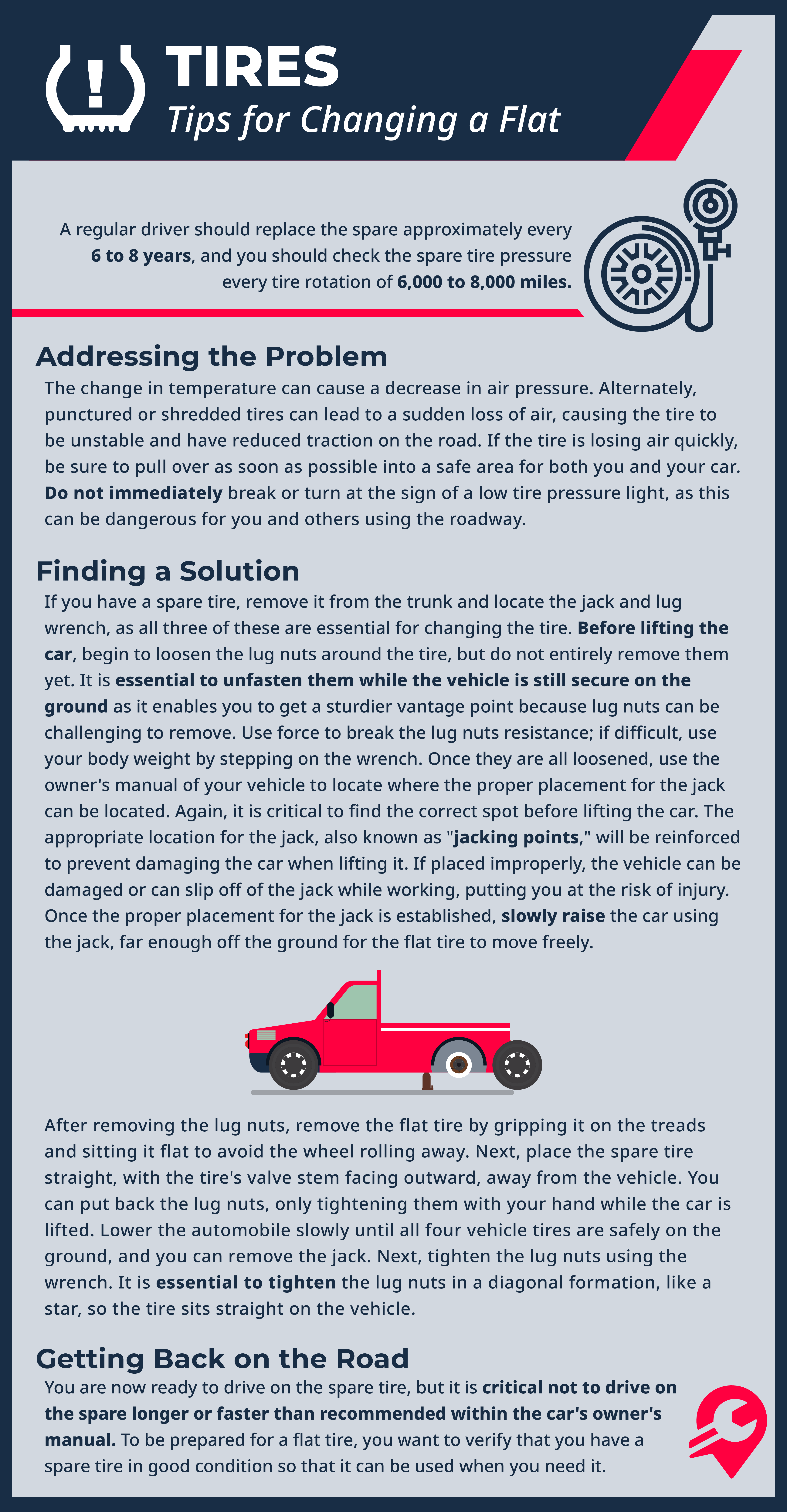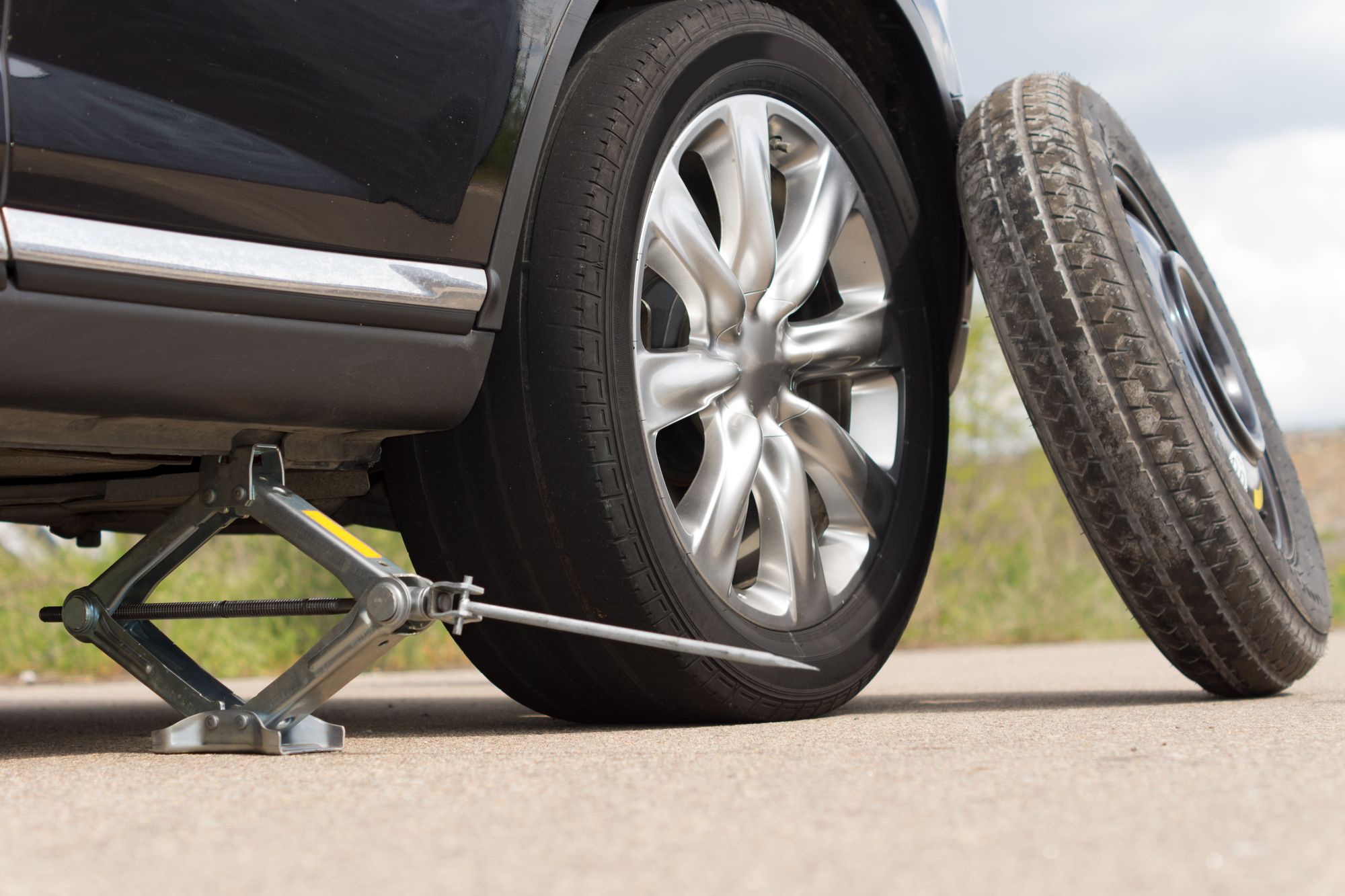You are driving home, and suddenly get a flat tire, what next?
Although dreaded and seemingly coming at the worst time, the standard driver experiences flat tires. On average, a typical driver will encounter roughly five flat tires within their lifetime, and as such, it is essential to be as prepared as possible for the unexpected.
Get a free quote
Prepare
Before getting a flat tire, you can take some measures to ensure that you are fully prepared for when it happens. Maintaining good tires is the first step. By maintaining tire health, you decrease the chance of a flat. It is essential to be mindful of road conditions and objects on the road with the ability to puncture a tire. Hazardous materials include things like potholes or broken glass. Sometimes these objects can be hard to see, making them more challenging to avoid.
Furthermore, be mindful to avoid over or underinflating tires, as both of these can lead to accelerated wear on tires or even cause unnecessary damage. Tires, under general use, can last drivers up to 5 years with proper maintenance and mindfulness. However, even with reasonable care and maintenance, many unpredictable factors can cause a flat tire, which is why it is important to prepare ahead of time.
Having a spare tire in good condition, along with the proper jack for your car, will prove invaluable when changing a flat tire. A regular driver should replace the spare approximately every 6 to 8 years, and you should check the spare tire pressure every tire rotation of 6,000 to 8,000 miles. Although it is not actively in use, air can still leak from the spare tire, making it vital to check and maintain in case you need it. The proper jack for your vehicle usually comes with your car, but a general rule of thumb is that a standard-sized car requires a one and a half-ton jack; for any vehicle larger, a more substantial jack is imperative, or the jack may bend, lose height or break. Once both the spare tire and jack have been checked, in addition to maintaining healthy tires, you are prepared for a flat.

Addressing the Problem
When a tire begins to get low air pressure, make sure to assess how quickly the tire is losing air. In many cases, it can be a change in temperature that causes a decrease in air pressure. Alternately, punctured or shredded tires can lead to a sudden loss of air, causing the tire to be unstable and have reduced traction on the road. If untreated, these problems can cause an accident or even the tire to burst, diminishing the control of the car, which can result in an accident. If the tire is losing air quickly, be sure to pull over as soon as possible into a safe area for both you and your car. Do not immediately break or turn at the sign of a low tire pressure light, as this can be dangerous for you and others using the roadway. Some examples of safe areas to pull over include parking lots, the side of a quiet road, or a marked pull-over zone. Ideally, you should avoid the side of bustling streets or hills as it puts you, your car, and other drivers at risk. Once you have reached a safe location to pull over, turn on your car's hazard lights, make sure to put on the parking brake and turn off the vehicle. The parking brake ensures that the vehicle will not move during the tire changing process, and the hazard lights notify other drivers of you and your car's location.
Next, locate the spare tire and other supplies necessary to change the tire, generally found in the trunk of a car, in addition to the owner's manual. It is relevant to know that some newer cars have chosen to get rid of the spare tire in favor of run-flat tires. If you have run-flat tires on your vehicle, you can continue to drive even with a punctured tire for up to 50 miles, enabling you to get home. If you have a spare tire, remove it from the trunk and locate the jack and lug wrench, as all three of these are essential for changing the tire. Before lifting the car, begin to loosen the lug nuts around the tire, but do not entirely remove them yet. It is essential to unfasten them while the vehicle is still secure on the ground as it enables you to get a sturdier vantage point because lug nuts can be challenging to remove. Use force to break the lug nuts resistance; if difficult, use your body weight by stepping on the wrench. Once they are all loosened, use the owner's manual of your vehicle to locate where the proper placement for the jack can be located. Again, it is critical to find the correct spot before lifting the car. The appropriate location for the jack, also known as "jacking points," will be reinforced to prevent damaging the car when lifting it. If placed improperly, the vehicle can be damaged or can slip off of the jack while working, putting you at the risk of injury. Once the proper placement for the jack is established, slowly raise the car using the jack, far enough off the ground for the flat tire to move freely.
After that, entirely remove the previously loosened lug nuts, and put them together in a safe location that you will be able to retrieve them from later. After they are detached, remove the flat tire by gripping it on the treads and sitting it flat to avoid the wheel rolling away. Next, place the spare tire straight, with the tire's valve stem facing outward, away from the vehicle. Replace the lug nuts, only tightening them with your hand while the car is lifted. Lower the automobile slowly until all four vehicle tires are safely on the ground, and you can remove the jack. Next, tighten the lug nuts using the wrench. It is essential to tighten the lug nuts in a diagonal formation, like a star, so the tire sits straight on the vehicle.
You are now ready to drive on the spare tire, but it is critical not to drive on the spare longer or faster than recommended within the car's owner's manual. To be prepared for a flat tire, you want to verify that you have a spare tire in good condition so that it can be used when you need it. Additional steps that you can take to guarantee your preparedness for a flat tire include watching the roads for hazardous conditions and making sure you do not require new tires.
Additional Information
Other tools that may be helpful for when you find yourself in need of changing a flat tire include items like a tire gauge, wheel wedges, and flashlights. A tire gauge enables you to take the tire's pressure manually and can be helpful for both the tire losing air and the spare tire. Wheel wedges provide an extra layer of protection from your car moving while you are in the process of changing the tire. Supplementary tools to aid in changing a tire can be beneficial in stressful situations. Still, the most helpful thing is actively working to prevent the problem to the best of your ability. Wrench offers mobile tire repair and replacement to make this easier and can be located here.
The most crucial thing to remember when it comes to the unfortunate event of a flat tire is to remain calm, find a safe location to pull over and follow other safety precautions to avoid turning a regrettable event into a problem. It is also imperative to be aware of your current tire condition to prevent a flat tire. With the proper preparation and knowledge, a flat tire becomes an easy-to-fix inconvenience with a quick remedy.
Wrench is an online full-service automotive shop. Wrench strives to make car maintenance and issues easier by taking away the shop. With mobile auto technicians accessible through the internet, Wrench enables busy, everyday life to be a little simpler. Wrench offers a very extensive list of car services, with easy scheduling, and certified technicians that come to you. Wrench offers mobile automotive mechanics to provide easily accessible mobile auto repair. For unexpected car services or planned maintenance, Wrench's mobile mechanics make servicing your car easier.
Get a free quote


